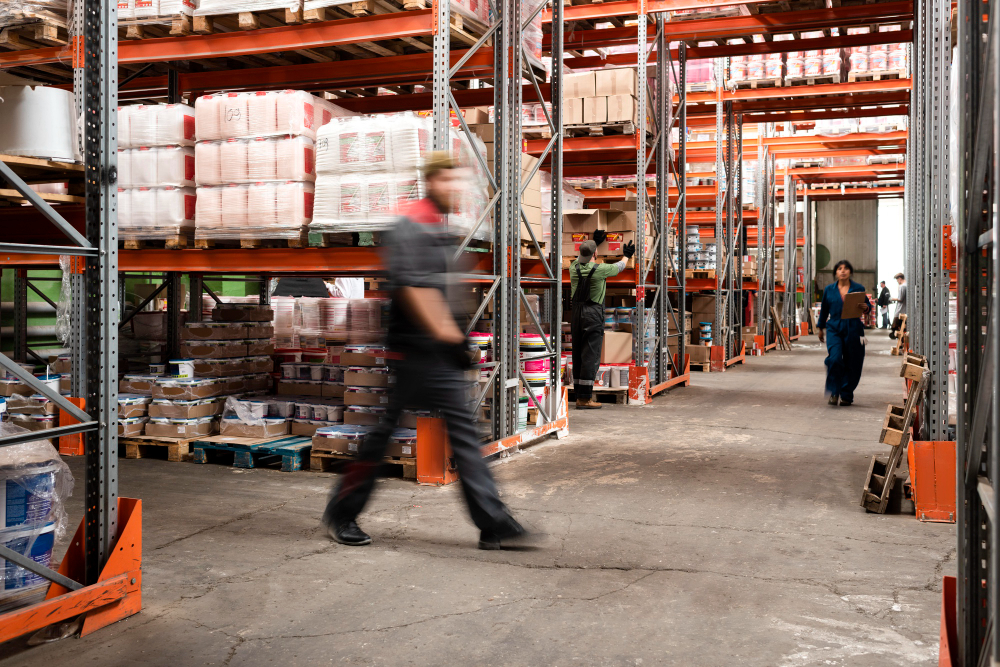Navigating the New Era of Warehousing Fulfillment: Trends to Watch in 2025

A study has revealed that the global environment of warehouses is rapidly evolving due to technological progress, changing customers’ needs, and a conscious approach to sustainable development. As we enter 2025, the traditional concept of warehouses is no longer primitive and dull spaces but innovative, efficient, and environmentally sustainable spaces equipped to meet the current supply chains.
In this blog, we review the future trends that will characterize warehousing in the coming years.
1. Technology: The Backbone of Warehouse Efficiency
In the coming year 2025, various technologies will remain instrumental in transforming the challenges of warehousing systems. Advanced levels of automation and robotics are expected to be an increasing feature of daily working life. While AGVs and drones share the warehouse space with human workers, they will be used for transporting goods and materials within the warehouse.
Also, the IoT and AI technologies are going to break the limitations of conventional warehouse management systems. IoT devices shall enhance the visibility of the various consignments in the supply chain through real-time tracking. Inventory will be handled through artificial intelligence algorithms as well as demand forecasting, storage space planning and locations, and even selection and dispatch of products without the involvement of a human workforce.
2. The Rise of Green Warehousing: A Sustainable Future
Sustainability has moved from being a trendy concept to a necessary attribute in the warehouse line of business. Environmental consciousness will continue to rise, and it is in 2025 that warehouses shall embrace environmentally friendly practices. They will seek to minimize the impact the company has on operations in terms of emissions of carbon dioxide, use of renewable energy, and extending the useful life of the warehousing structures.
Concerning some of these changes, some of the developments include the use of solar panels on the roofs of the warehouses to generate power for use within the facility. Solar energy could significantly decrease the dependency on fossil fuels, and this strategy is already being adopted by numerous reputed companies to decrease operational expenses in the future. Similarly, several warehouse management systems will incorporate efficient natural lighting as well as utilize LED systems for lighting the smart management systems on energy usage.
FAQ’s
1. How long can I lease storage space?
- Leases can vary from a few months to several years, depending on your needs and the agreement terms.
2. Can I extend my lease if I need more time?
- Yes, most lease agreements allow you to extend your contract if you need the space longer.
3. Do I need insurance for leased storage space?
- It’s recommended to have insurance for your goods, but some providers may offer coverage as part of the lease.
4. What happens if I want to move out before my lease ends?
- Breaking a lease early might incur a penalty, but some contracts offer flexible exit options. Always check the terms before signing.
3. Supply Chain Resilience: Flexibility and Adaptability
The supply chain disruptions experienced during the COVID-19 pandemic underscored the need for greater flexibility and resilience in warehousing. Taking the analysis forward, it adds that by 2025, warehouses will be more equipped to deal with ups and downs in demand and unpredictability in the supply chains.
Additionally, the use of multiple channel distribution networks will be higher as the warehouses will not only be used for storage of the products and inventory but also for direct delivery to the customers withholding delivery time and expenses. These adaptable systems will enable organizations to grow and develop flexibly depending on new factors that may affect the operations, hence the ability to deliver on operations in the face of challenging conditions.
4. Data-Driven Decisions: The Era of Smart Warehouses
It is expected that in 2025, data will be the backbone for the execution of warehouses. Through major data, a warehouse can use the information to make better decisions on every aspect of a warehouse, from stocks to manpower. The four aspects of business intelligence, namely demand forecasting, optimum staffing, and optimal storage, will all be made possible by predictive analytics.
Real-time data collection and analysis will also improve the customer experience, as warehouses will be able to track and fulfill orders with pinpoint accuracy. Enhanced data sharing between warehouses and other parts of the supply chain will ensure that businesses remain responsive to customer needs, whether it’s a sudden surge in demand or a new product launch.
CONCLUSION
The evolution of the warehouse up to the year 2025 will focus on the warehouse of technology, environmentally friendly, and flexible warehouse. When implemented, these innovations will not just enable warehouses to function within the current fast-paced customer orientation; more importantly, they will help create a more sustainable and robust global supply chain.
Get in touch with the best warehouse leasing services in Hyderabad, Scalar, today!
